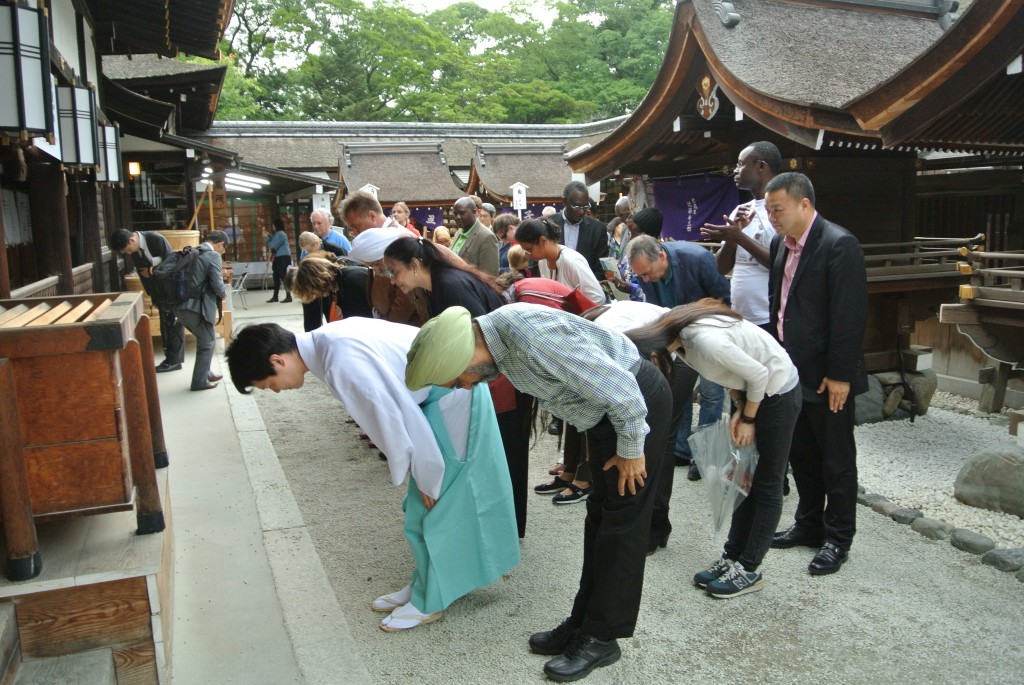
ARC's interfaith delegation pay respects at Kyoto's Shimogamo Jinja
Following the historic conference at Ise Jingu, members of ARC (Alliance of Religions and Conservation) were taken on a tour of Shimogamo Shrine in Kyoto, a World Heritage site. The shrine dates back to a time before Kyoto was founded in 794, and in its precincts is a wooded area the size of three baseball grounds which constitutes a remnant of the original primeval forest that once covered the Kyoto basin.
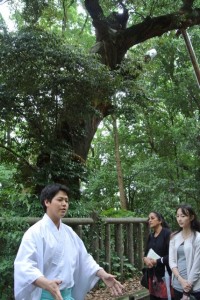
A Shimogamo priest explains the thinking behind Shinto's sacred trees
A young priest from Shimogamo guided the international group (7 different faiths) around the grounds, explaining how Shinto originated as nature worship and only later put up buildings to house the kami. Special trees were thought to be inhabited by kami, he explained, as the group paused beneath a particularly old and grand specimen. Another sacred tree he pointed out had been struck by lightning, thought to be a divine spark from the heavens.
Inside the shrine the priest explained that the outer perimeter was painted vermilion red, a sacred colour that showed power and warded off evil spirits. It also helped protect the wood. The buildings inside are in bare wood, more fragile, and being natural, closer to the kami.
After a demonstration of how to pay respects, the priest led us into a separate compound where we were treated to a display of the junitoe (12-layered ceremonial robes) worn by Heian noblewomen on ceremonial occasions. Twelve was just a figure to suggest many, and the number of layers is not necessarily twelve at all. In fact, the demonstration put on for the group consisted of ten layers, and at one time there had been as many as thirty as courtesans vied with each other to show their status. (It was only possible to wear that many layers in winter, and as they weighed up to as much as fifty kilos there was not much walking around!)
Afterwards the group was invited to pose with the white-faced and multi-layered model, causing a confused melée. Were the kami entertained? I’m sure they must have raised an eyebrow or two at scenes the likes of which they had surely never seen before. Emperor Komei famously came to Shimogamo Jinja in 1863 to pray that foreign barbarians should not be allowed to darken the sacred soil of Japan. The times they are a-changing!
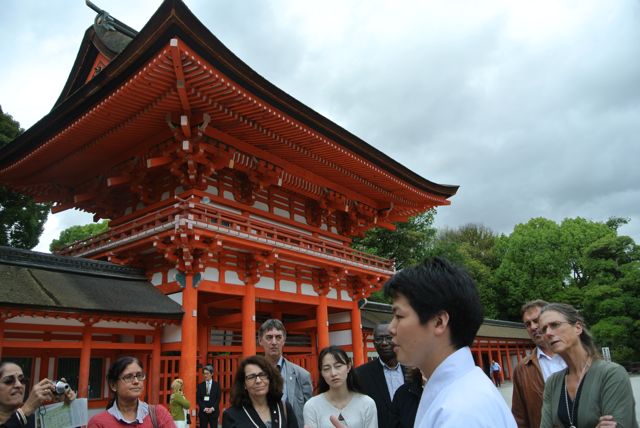
Explaining why the outer precinct is painted vermilion red, an auspicious colour which originated in China
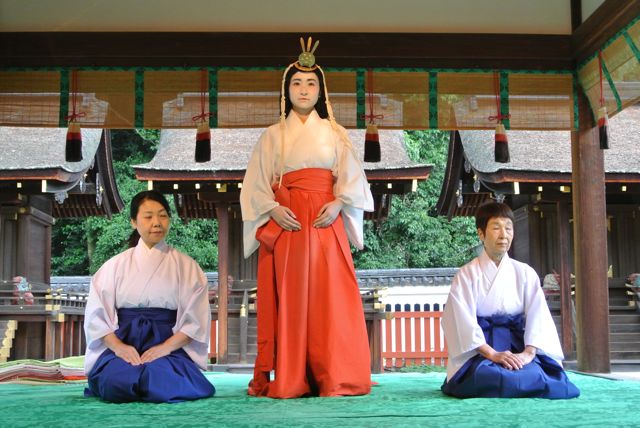
The beginning of the twelve-layered kimono (junitoe) demonstration, with the model in her 'underclothes'
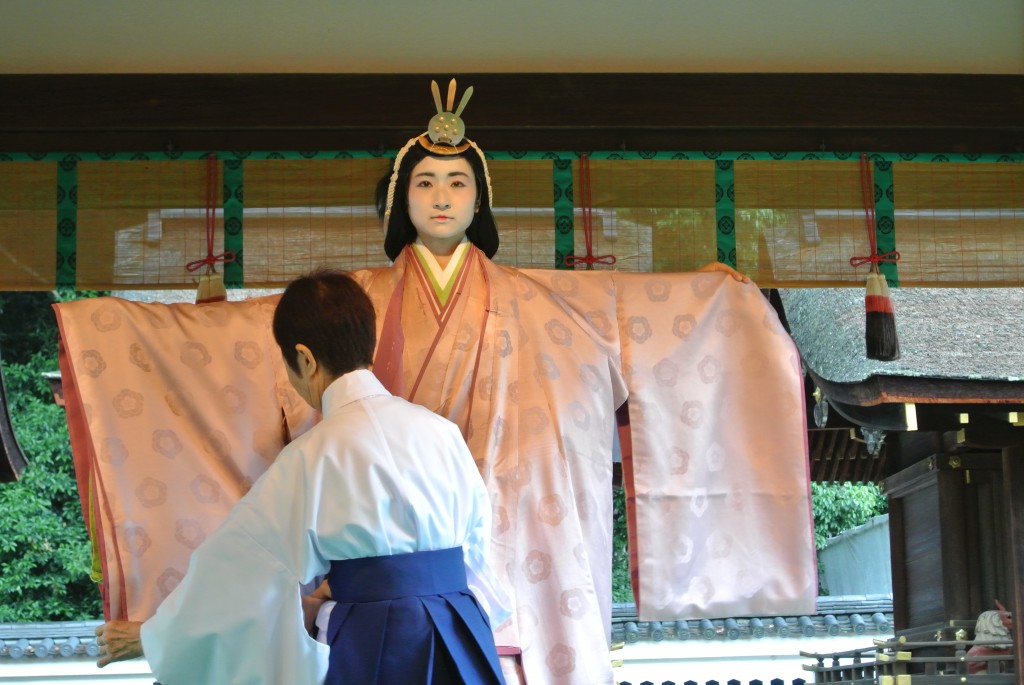
On goes one of the twelve layers. The woman doing the dressing at the front can never stand up on a level with the imperial princess.
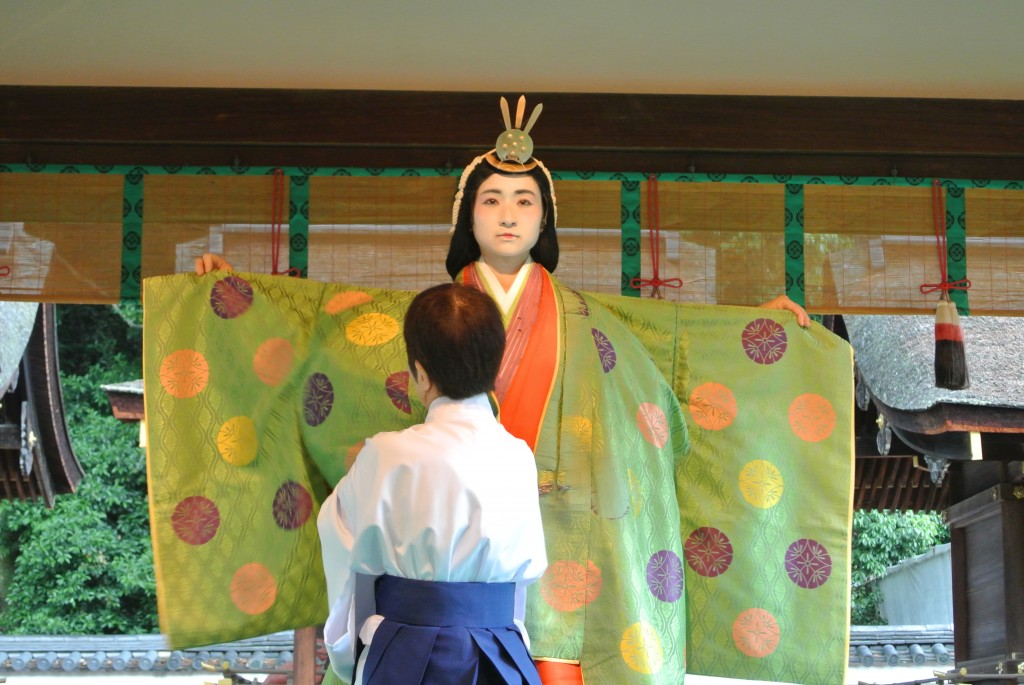
The outer layers have higher status denoted by the emblems with which they are decorated.
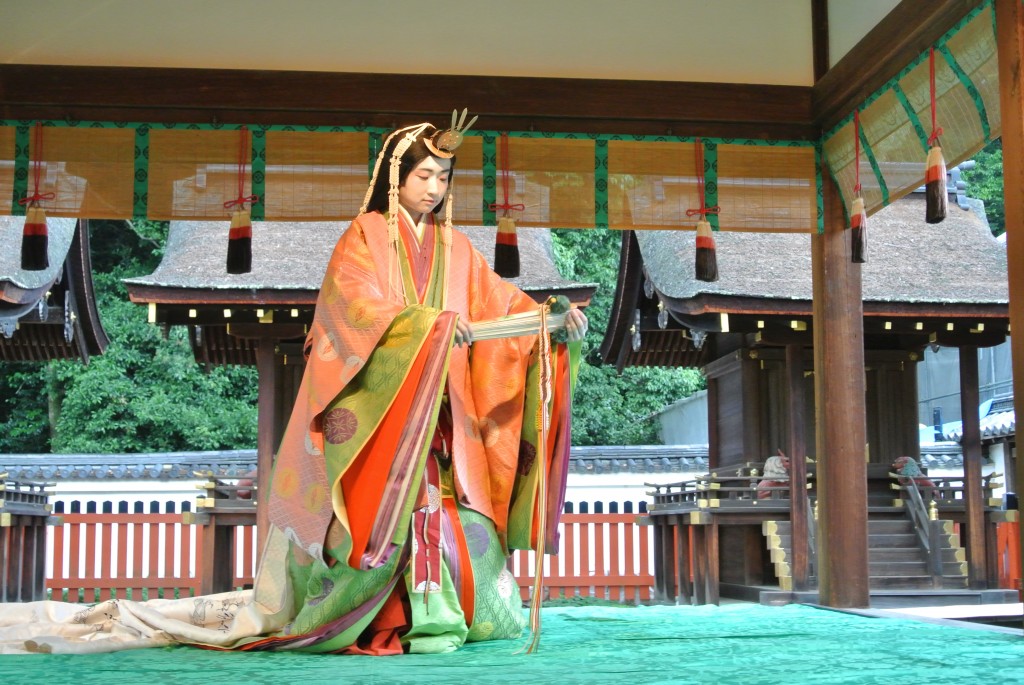
The stunning final outfit, complete with fan. The ensemble has to be carefully coordinated in colour terms to match the high standards of Heian aesthetics.
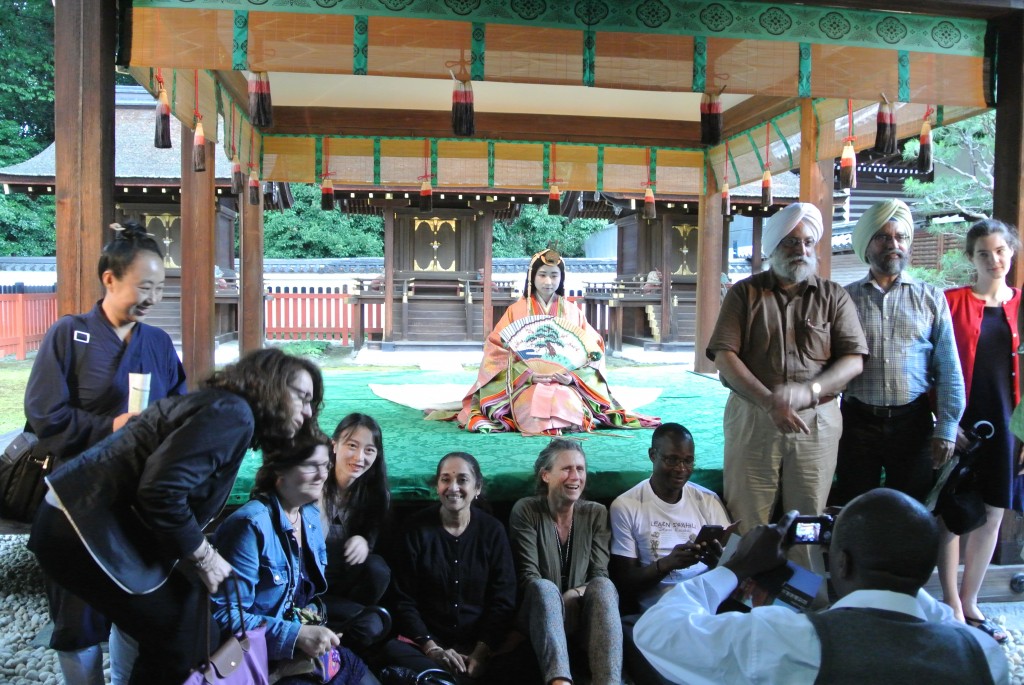
Group pose – not the typical everyday scene at a shrine!

Cool, thanks for sharing, I like the kimono, so beautiful…….